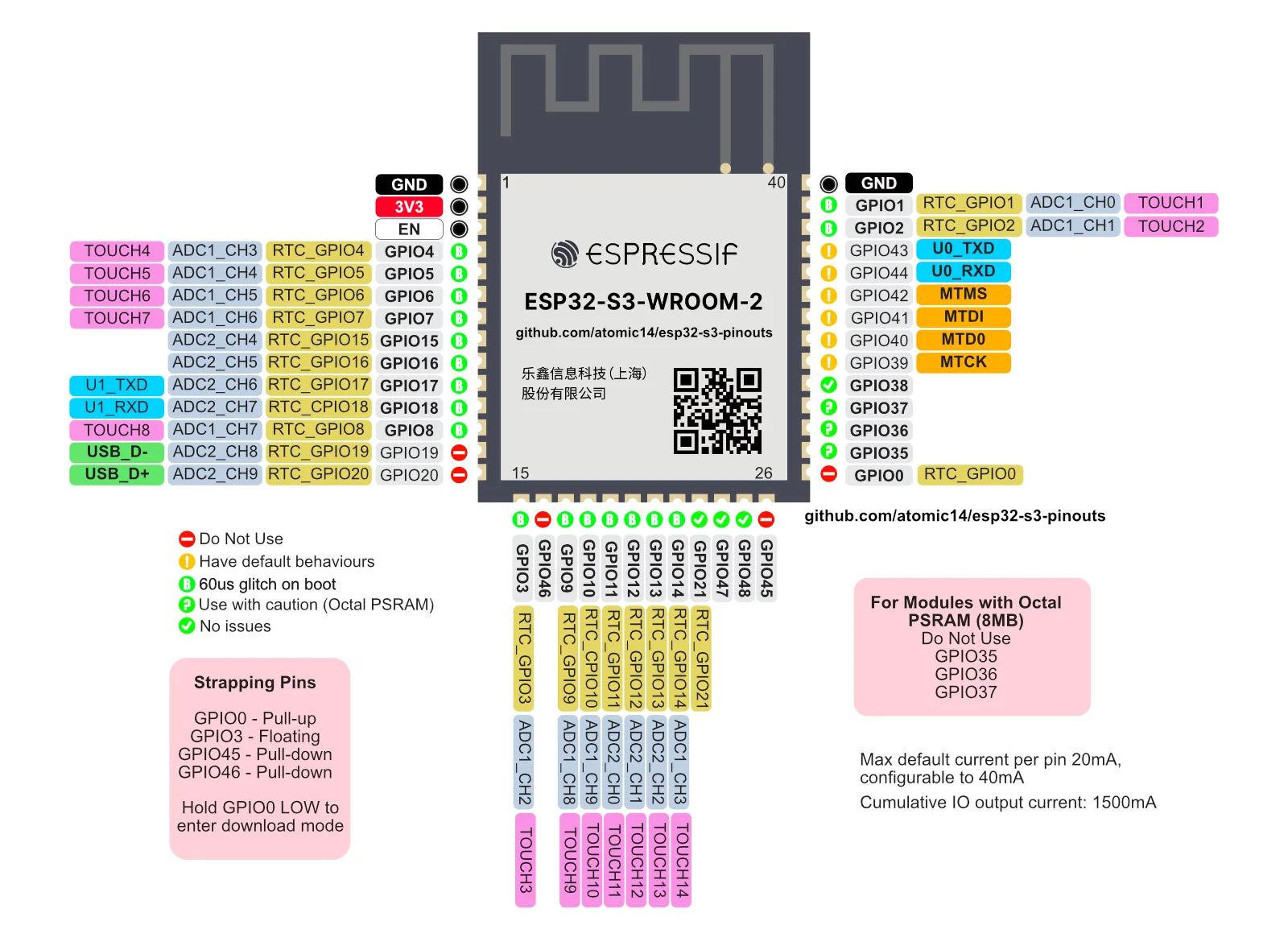read
Want to keep up to date with the latest posts and videos? Subscribe to the newsletter
HELP SUPPORT MY WORK: If you're feeling flush then please stop by Patreon Or you can make a one off donation via ko-fi
#DIY
#EDUCATION
#ELECTRONIC PROJECTS
#ESP32-S3
#GITHUB
#HARDWARE
#MICROCONTROLLER
#OPEN SOURCE
#PINOUT
The ESP32-S3 is pretty flexible, but there are still pins that should not be used. I’ve always found the Random Nerds page page really useful for the old ESP32.
So I’ve made one for the ESP32-S3 - You can find it here on GitHub
Feel free to open up PRs/Issues if you see something wrong or think it can be improved. It would be good to make this a “living” document.
There’s a lot more info at the GitHub repo, and this image is available as a high res PDF.
#DIY
#EDUCATION
#ELECTRONIC PROJECTS
#ESP32-S3
#GITHUB
#HARDWARE
#MICROCONTROLLER
#OPEN SOURCE
#PINOUT
